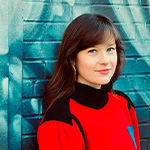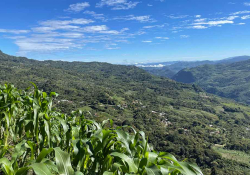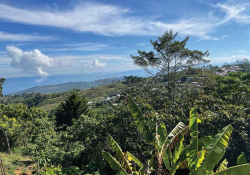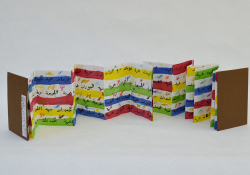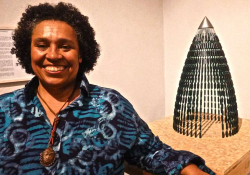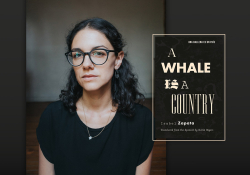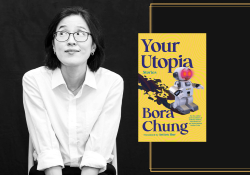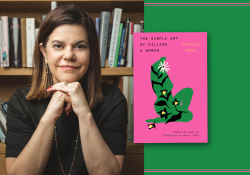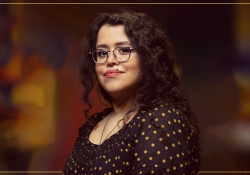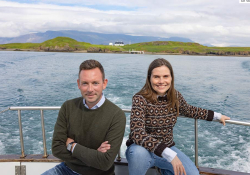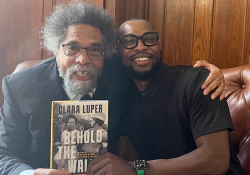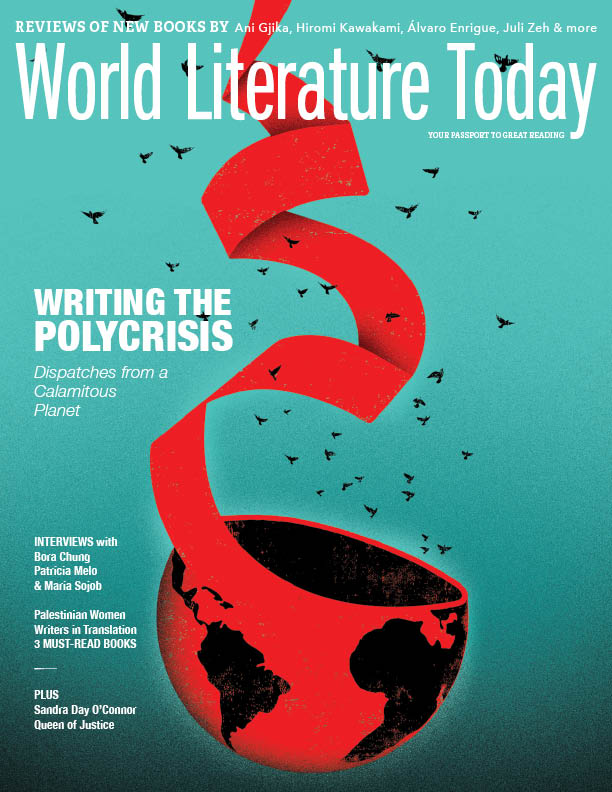A Conversation with Tsotsil Filmmaker María Sojob
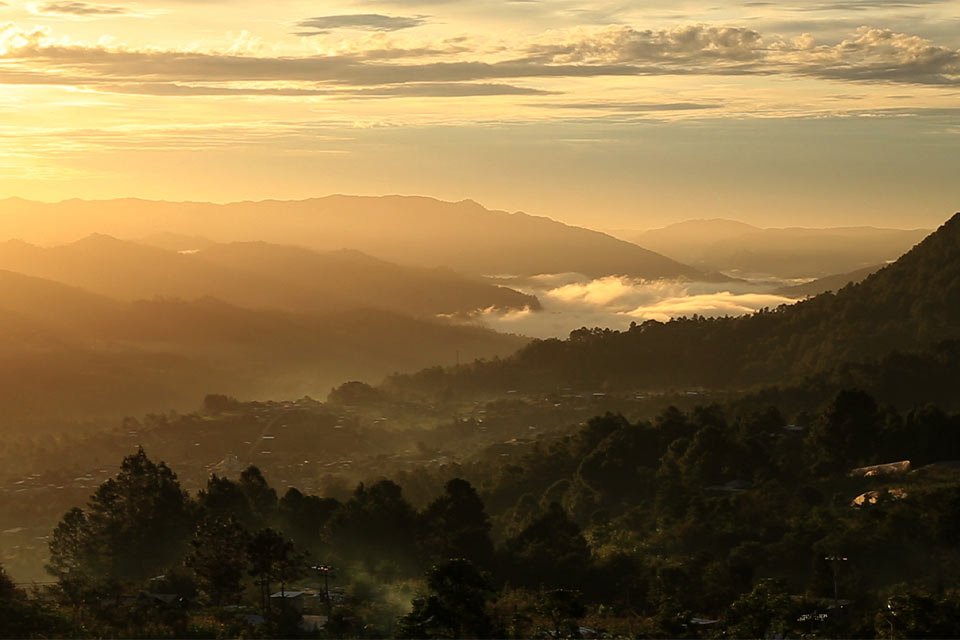
María Sojob, a Tsotsil filmmaker, visited the University of Oklahoma in November 2023 as part of the Mayan Film Festival organized by Carol Rose Little, sponsored in part by WLT. Sojob screened her film Tote/Abuelo (2019), a documentary in the Tsotsil language about her relationship with her grandfather, or tote in Tsotsil (pronounced toe-tay). Tsotsil is a Mayan language spoken by half a million people in southern Mexico and diaspora communities across the US. This interview was conducted on Sojob’s last day in Oklahoma.
Carol Rose Little: Thank you for coming to the University of Oklahoma and showing your documentary Tote/Abuelo. I wanted to begin by asking you what motivated you to make this documentary?
María Sojob: Thank you and the University of Oklahoma for having me. The first motivation was to leave a record, both visual and auditory, of my grandfather’s life and, above all, his work making traditional hats. I made it when I did because he was sick and going blind; time was passing very quickly. As he began to age, he was no longer the grandfather who used to scare me as a child. Instead, he inspired a tenderness in me, a need to get to know him and establish a relationship with him. That need led me to convince him to let me record our interactions. Through visiting him, many questions arose: why didn’t I have a close relationship with my grandfather, with my home territory, with my life in that community? The only link I had was the Tsotsil language, which, despite years of oppression, continues to live on.
Between different territories, Maya and non-Maya, and between different languages, Spanish and Tsotsil, the story and the film are woven together. I seek to find answers about affection, emotions, and love. The fabric of the hat he is making in the documentary becomes the metaphor that connects these worlds and, little by little, weaves together the answers.
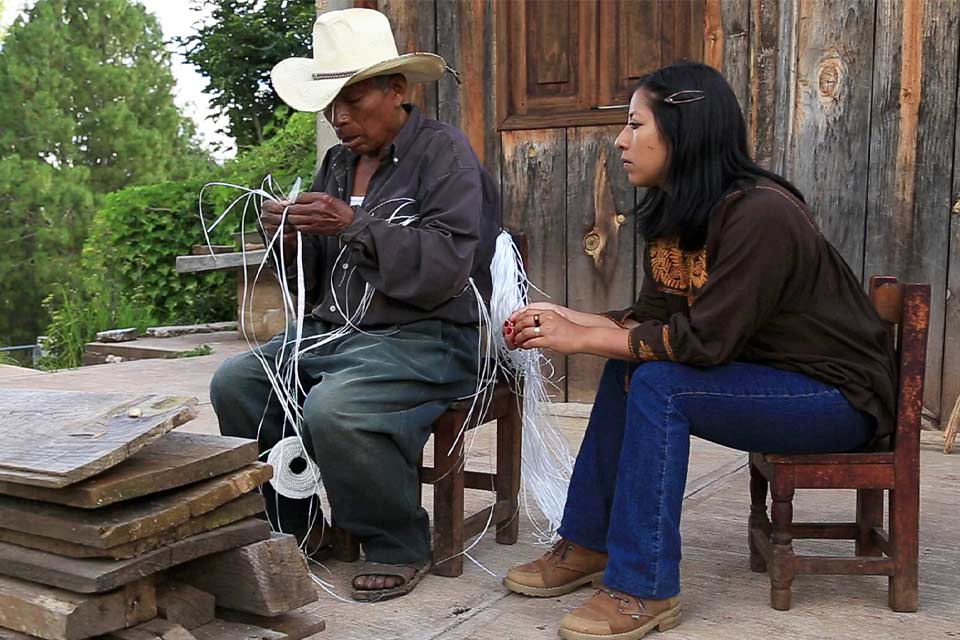
Little: How was it to screen Tote/Abuelo in Oklahoma?
Sojob: Screening it in Oklahoma made me remember what motivated me to make the film. The themes of the film are family relationships, memory, and love; these themes are things that many people experience. We all love, we all have issues and difficulties with family members. It’s not only about it being an Indigenous film by an Indigenous person in an Indigenous place; it’s about the commonalities we all share that traverse our differences. To be able to connect is important. A lot of films speak to collective struggles, but this documentary is more about the personal, and even if one is not from that culture, one can still see oneself in it. I felt that viewers in Oklahoma really connected with the people in the documentary.
Little: One of the things that struck me when watching the documentary were the long, extended shots of the landscapes, something that is not typical of mainstream documentaries. Could you speak a little more about these shots?
Sojob: It was actually instinctual; I did not realize I was doing it until it was pointed out to me. The extended shots reflect the rhythms of the community and how time passes there so that viewers could experience it, too. I include a lot of shots of the surrounding nature of the community to convey the connections the community has with the earth, its animals, and people. Time works in different ways in Tsotsil communities.
Time works in different ways in Tsotsil communities.
Little: The documentary was almost entirely in Tsotsil. Could you tell us more about the role of the language in the film and in your community?
Sojob: We use Tsotsil on a daily basis where I’m from. Even Tsotsil people who have moved away from their communities continue to use the language. For the documentary there was no other option than to do it in Tsotsil. It was important to represent this in the documentary. Also, Tsotsil is the only language that I can communicate in with my grandfather, so I needed to respect the codes of conversation. On the other hand, my mother always spoke to me in Spanish, so that is the language I use with her in documentary.
Making a documentary in Tsostil is an act of resistance, a political act. The official language of Mexico is Spanish, everything from school to media is in Spanish. There is just not enough material in Tsotsil, so I wanted to bring that to the documentary.
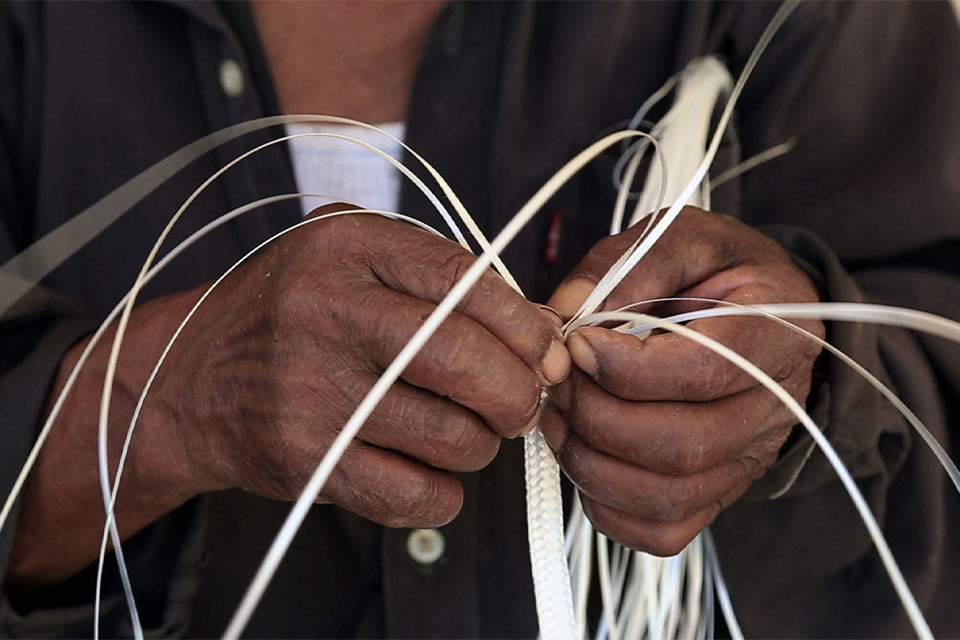
Making a documentary in Tsostil is an act of resistance, a political act.
Little: What is the response of Tsotsil communities when you screen the documentary there?
Sojob: When I show the documentary in Tsotsil communities, there is a much more direct connection; subtitles aren’t needed. I think that it is also important for Tsotsil children and young people to see that films in their languages are not only being projected in their communities but also abroad. For them to see a Tsotsil documentary being shown at festivals with movies in German, French, and English helps elevate the status of the language.
Little: How is it to shoot and make films in the community where you are from?
Sojob: Filming in the communities started as a way to record conflicts and report wrongdoings. Cameras gave people the technical tools to do that. But after that, we began to train ourselves to film stories through the camera and began to make films that have narrative structure. It is a fairly recent movement that young people from the community are working more in the arts. Audiovisual productions have been around for decades, but only recently have these productions started to pick up in Tsotsil communities. The teams I work with to shoot my documentaries are entirely Tsotsil.
Little: Is there a burgeoning Tsotsil cinema, would you say?
Sojob: I think it’s hard to say whether there is such a thing as “Tsotsil Cinema” right now and how that would be defined. The stage we are in is reflectional; we know about the theoretical and technical concepts of how to make films, but now we are in a stage of reflection as to how to put this all together to be able to tell narratives using the forms of narratives from the community itself, recording the rhythm of time, soundscapes, and how they connect with the knowledge and feelings of the communities.
Little: What would you say the role of language is in films?
Sojob: I believe that cinema can be an elitist space; film festivals are not for certain groups of people, so bringing cinema to the community in their language is important. I believe that cinema does help a lot to elevate languages. You don’t have to have learned the official language as your native language to be able to be part of a nation. It is important to be able to use other languages so that people, especially children and young people, feel proud of speaking the language, since many do not want to speak their language because it is not something that they are taught to feel proud about; they are ashamed about it, as if speaking an Indigenous language is like taking a step backward. I think that all these recent Indigenous artistic movements have been very important to promote the status of the languages, not only for Tsotsil but also for many other languages throughout the Indigenous world. This is one of the reasons we started our community cinema, Cine Bolomchon.
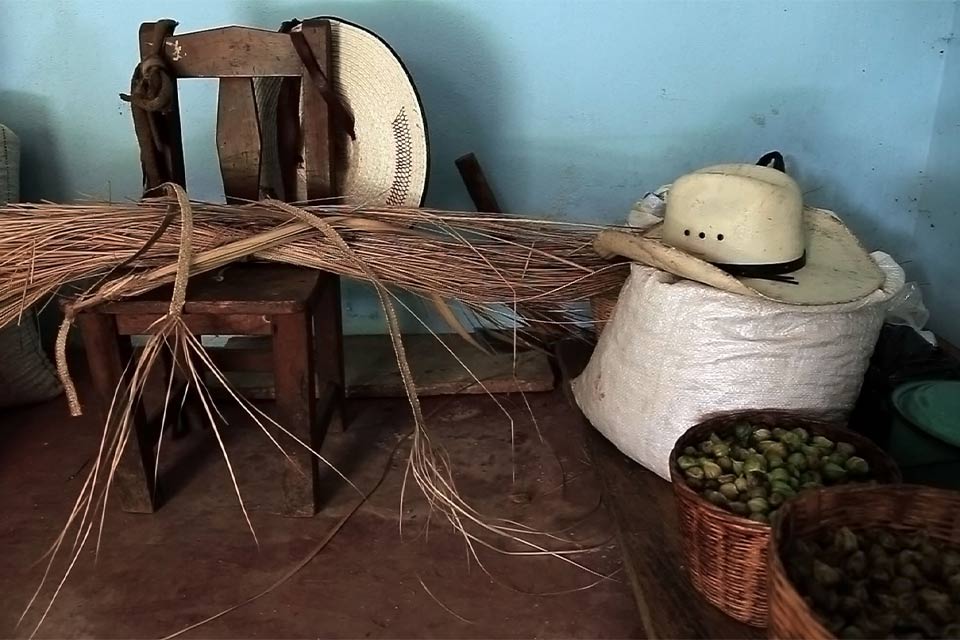
Little: Could you tell us more about Cine Bolomchon?
Sojob: The name Bolomchon comes from Mayan beliefs. Bolomchon is a divine mythical being that is part of the cosmovision of Mayan peoples. For Cine Bolomchon, every month we haul a projector, screen, and speakers to the central square and show movies for people in my community. A lot of commercial cinema comes through television, and often in commercial cinema, the portrayal of Indigenous peoples is racist, discriminatory, stereotyped, and romanticized. For this reason, we don’t show commercial films at Cine Bolomchon. We show independent films and films by Indigenous filmmakers. We have had directors of some of these films come visit and speak to the audience and answer questions. Cine Bolomchon has been around for about three years, and it’s one of the only community cinemas in the region. Before each screening, we disseminate announcements via a loudspeaker on the back of a truck. At first, only a handful of people would show up, but now it has grown into a whole community event. Cine Bolomchon has been an important space to foster a film-loving public.
Little: During your visit to Oklahoma you talked about your special position in the community. Could you tell us more about that?
Sojob: Where I’m from, the form of government is still usos y costumbres, similar to how it was before colonization. There is a big ceremony, or festival, that happens every February, connected to the Mayan calendar. I hold the position of Paxon [pronounced pah-shown] with my husband, as only couples are allowed to lead this festival. We were selected by the authorities of the community as one of four couples to take on this responsibility. Knowledge of this festival is passed down from generation to generation. It’s the biggest festival in town, and it takes a whole year to prepare.
Little: Wow, one year to prepare!
Sojob: Since I live in Ch’enalvo’, I can’t just be a filmmaker. I must participate within the structure of the community; I have certain responsibilities. I am grateful for these responsibilities as they have allowed me to grow and mature as well as learn the practices of the community where I am from.
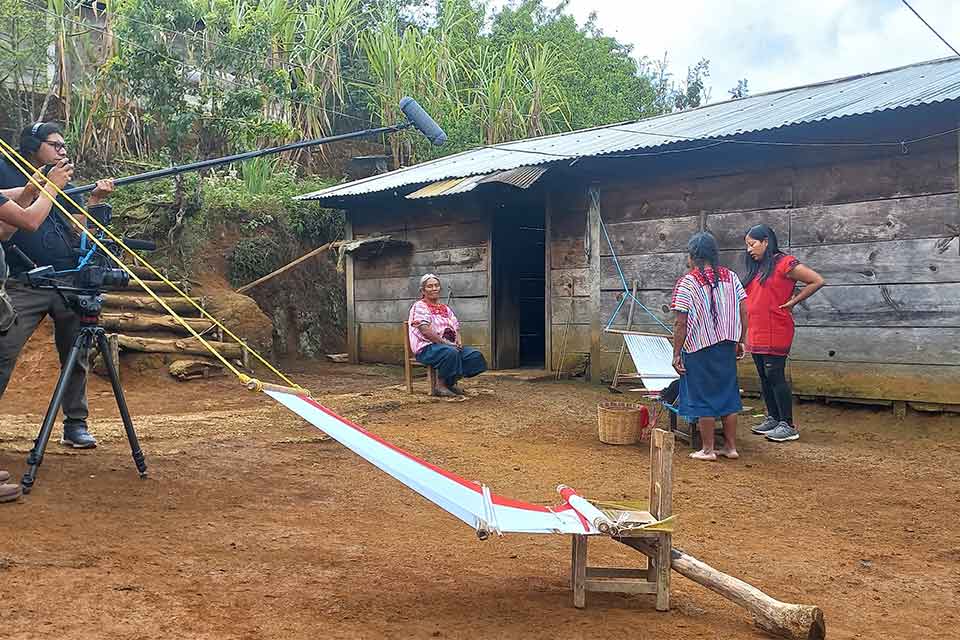
Since I live in Ch’enalvo’, I can’t just be a filmmaker. I must participate within the structure of the community; I have certain responsibilities.
Little: To conclude, I wanted to ask you about your ongoing and future projects.
Sojob: In addition to continuing Cine Bolomchon, I’m finishing up a documentary I filmed in Honduras with Lenca women. They are reclaiming ancestral knowledge and practices and are also working to defend their territory against extractive mining. A second documentary project is about the festival I mentioned. I am also working on an animated film for children.
One day I hope to make fiction films. I have written some scripts and hope to turn them into movies with a Tsotsil filming crew and cast. It’ll be an important step for more diverse representation in media.
November 2023
Translation from the Spanish
Editorial note: Little would like to thank the following sponsors at the University of Oklahoma who helped in making the Mayan Film Festival possible: the Departments of Modern Languages, Literatures and Linguistics; Native American Studies; and Film and Media Studies; a Public Fellows Grant from the Arts and Humanities Forum; the Public Fellowship Center for the Americas; Native Crossroads Film Festival; the Latin America Sustainability Initiative; and World Literature Today.
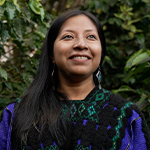 María Sojob is a Tsotsil filmmaker from Ch’enalvo’, Chiapas, Mexico. Her documentary Tote/Abuelo won the Ambulante Special Award for a Mexican Feature-Length Documentary and Best Mexican Documentary made by a woman at the 2019 Morelia International Film Festival. She holds a master’s in documentary film from the University of Chile.
María Sojob is a Tsotsil filmmaker from Ch’enalvo’, Chiapas, Mexico. Her documentary Tote/Abuelo won the Ambulante Special Award for a Mexican Feature-Length Documentary and Best Mexican Documentary made by a woman at the 2019 Morelia International Film Festival. She holds a master’s in documentary film from the University of Chile.
